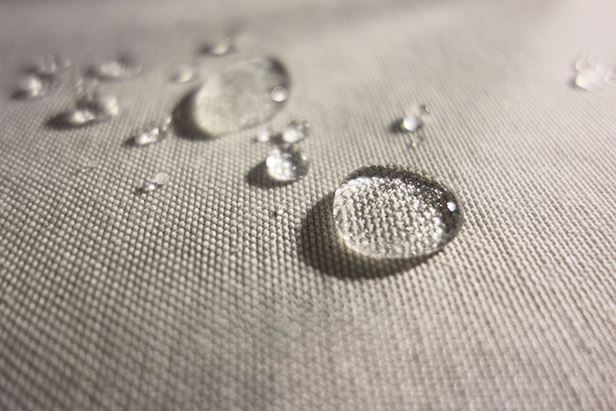Reducing release of microplastic fibre fragments from textiles
Textiles release fibre fragments during manufacturing, usage and washing. Fibre fragments from synthetic fibres such as polyester are a source of microplastics. Microplastics are very small pieces of plastic material, less than 5 mm, and they can be harmful to health and the environment.

How does the Nordic Swan Ecolabel contribute?
Nordic Ecolabelling applies the precautionary principle when setting criteria for the Nordic Swan Ecolabel and aims to limit the release of microplastic fibre fragments into the environment when possible. This depends on whether technical solutions are available. Nordic Ecolabelling has the following requirements:
- Fibre fragment loss from synthetic microfibre cloths and mops must not exceed a set limit.
- Synthetic clothes and home textiles must be tested for loss of microfibre fragments by standardized methods. When the industry has collected enough data for a rating scale to be developed, Nordic Ecolabelling will set a limit value.
- Textile services (laundries) are rewarded if they have installed filters that collect microplastics.
What is a “microplastic fibre fragment”?
A fibre fragment is a small piece of fibre that is detached from a textile and can be further broken down in the environment. Such fragments can originate from both synthetic and natural fibres.
Synthetic fibre fragments are considered microplastics. In the textile industry the term microfibre means any synthetic or natural fibre with a diameter less than ten micrometers (one denier). To avoid confusion the term fibre fragment is preferred for small pieces of any fibre that are detached from textiles.
Environmental background
-
A major challenge has been the lack of standardised methods for examining fibre fragment loss / microplastics from textiles. Such test methods are now ready and there is a need for more studies that collect and compare test results to find out what should be done.
Both the fibre type, yarn properties, textile structure, brushing and cutting techniques can have a bearing on how much microplastics / fibre fragment is released from the fabrics. Fibre fragments / microplastics can also be collected during the production process, for example after washing or by removing loose fibre fragments from dry fabrics.
Such methods are under development. Some microplastics from production as well as from washing machines are, however, retained in wastewater treatment plants.
-
Synthetic fibres constitute a large share of the market for textiles and have applications that natural fibres cannot fully cover. Completely excluding synthetic fibres from ecolabelled textiles will make the Nordic Swan Ecolabel not relevant to a large part of the market.
Nordic Ecolabelling believes that it will have greater environmental impact to set requirements that can contribute to reducing the environmental burden from both synthetic and natural fibres. Here, the overall requirements for chemicals, resource use, quality and durability, biodiversity and climate impact are important.
For synthetic fibres, the Nordic Swan Ecolabel requires that recycled or bio-based fibres be used so that less new plastics from fossil sources are produced.
-
Polyester is the most common synthetic fibre, and polyester fleece was early mentioned as a source of microplastics. However, all synthetic textiles shed microplastics.
Very little research has been published on whether fleece is worse than other polyester fabrics, and the results are contradictory. Currently, a lot of research is being done on how the production of fleece and other polyester fabrics can be improved to shed less.
Nordic Swan Ecolabel fleece textiles must now be tested for loss of fibre fragments and when a rating scale is developed fleece with high fibre loss after washing can be excluded.
-
Textiles made from cellulose fibres, such as cotton and regenerated cellulose fibre (viscose), also shed microfibres, and such microfibres have also been found in aquatic environments.
However, there is greater concern about plastic fibres because they more easily attract environmental toxins, which are then transported with the fibres. In addition, cellulosic fibres degrade more quickly.
Wool is a protein fibre that also degrades, but there is little research on whether microfibres from woollen fabrics persist in the environment. Even natural fibres are commonly treated with wax or various types of plastics to make the fabrics softer or shrink less when washed. How this affects how the fibres degrade or shed microplastics is little known. Therefore, the Nordic Swan Ecolabel requires that any coating on wool must be degradable.
-
To reduce environmental impact from textiles, the most important is to use the clothes you have, buy less new clothes and buy clothes of good quality that can be used for a longer time.
Microplastics can to some extent be retained in washing machines by using a filter. Filters for consumer washing machines have been developed but are not standard yet. Washing bags that retain microplastics also exist, but research shows that both filters and washing bags vary in how much they retain.
Good advice is therefore to wash less often, use a front-feed washing machine and wash at a low temperature.
Scientists and industry are constantly working to develop better filters for both commercial and household washing machines.
More knowledge is needed
Over the last years several major research projects on microplastics have been carried out, with researchers, organisations and the textile industry collaborating, and new projects are underway. Efforts are being made both to identify the sources of release and how the environment is affected, and to develop better materials and production methods. Nordic Ecolabelling follows these projects and will continue to gather new knowledge.